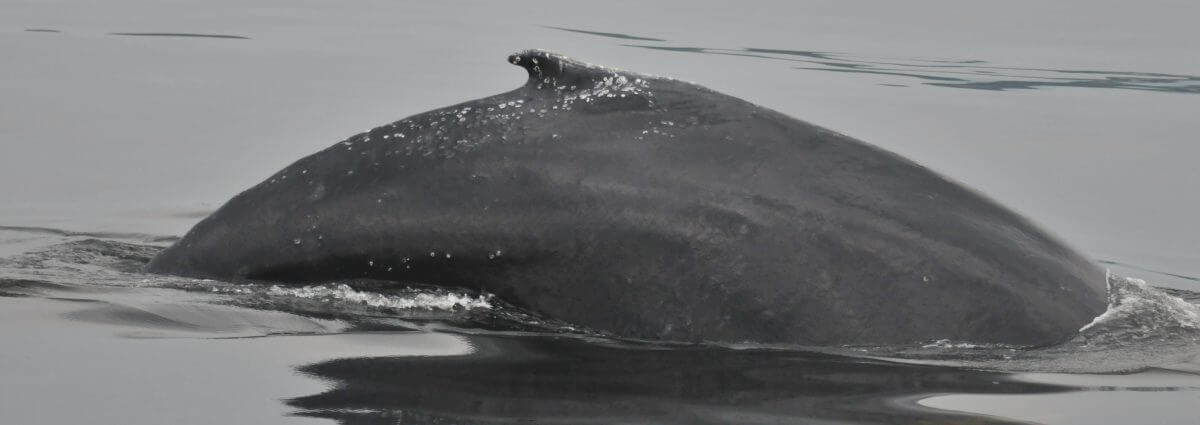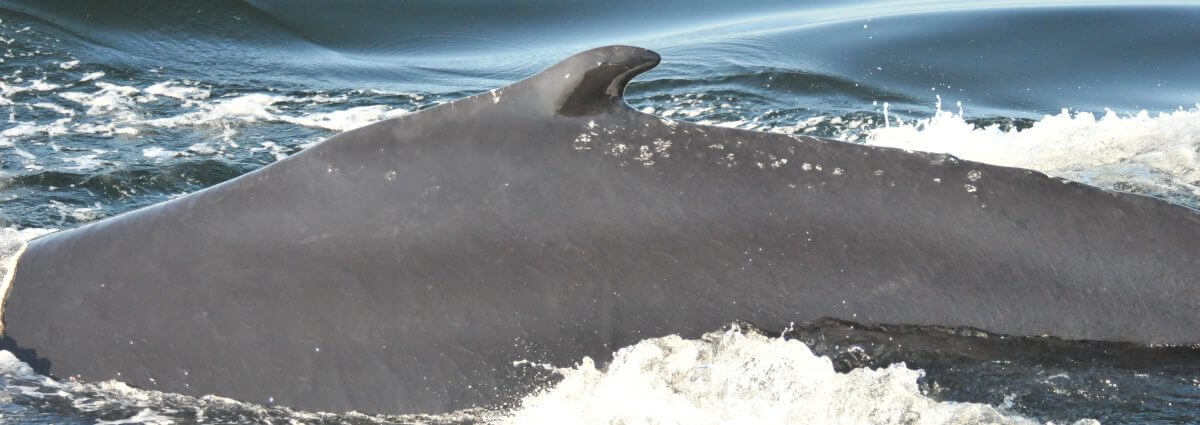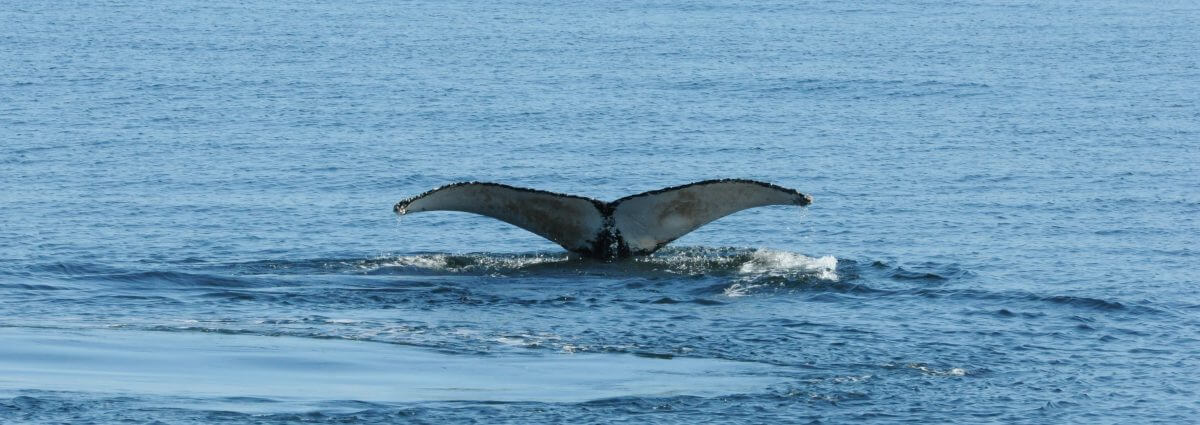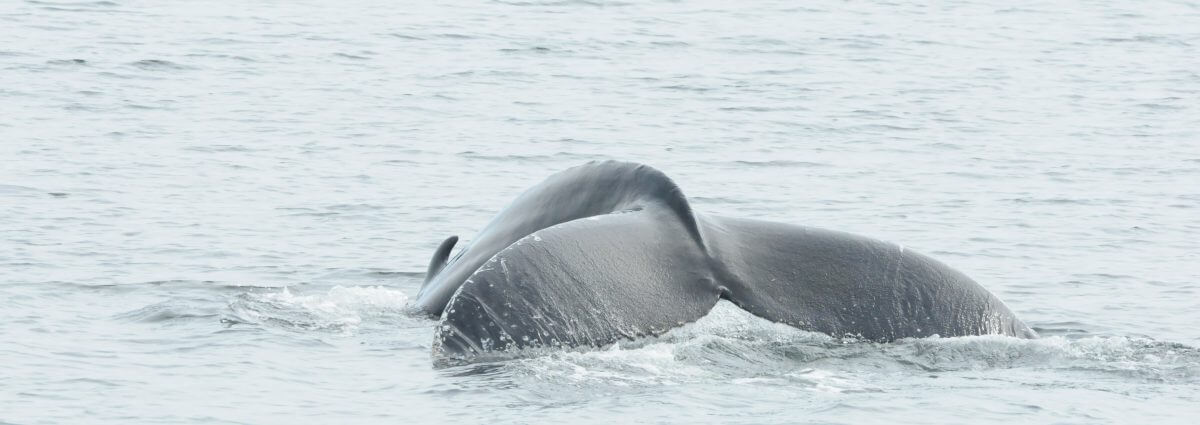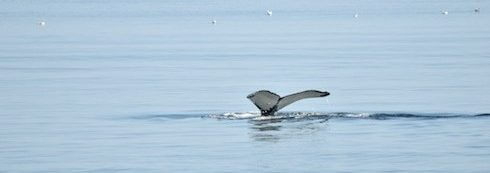Blizzard
Humpback Whale

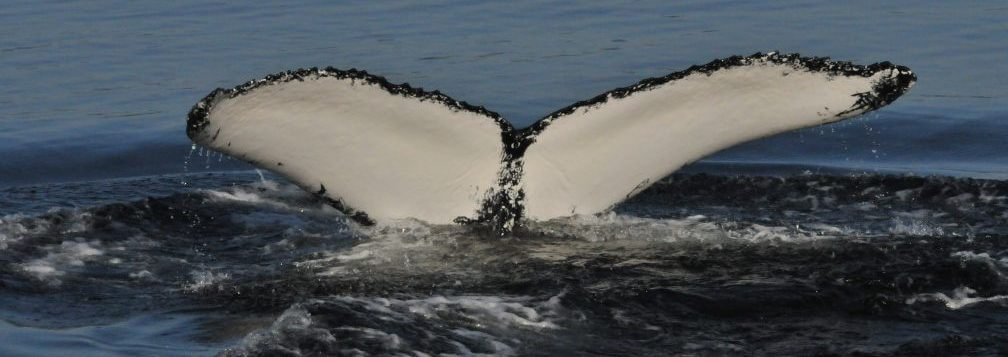
-
ID number
H728
-
Sex
Female
-
Year of birth
2008
-
Known Since
2008
Distinctive traits
Blizzard owes her name and nickname to the almost immaculate whiteness of her caudal fin. In addition, small black spots located on the periphery and in the center of her tail help identify her.
Life history
Blizzard was born in 2008. Her mother is Soledad, a regular visitor to the Gulf who has never been to the estuary. In 2009, she arrived alone in the marine park during her second migration to the St. Lawrence. This story seems quite normal to observers in the area; however, among humpback whales, tradition dictates that young whales feed in the same place every summer, where their mothers took them during their first summer.
Blizzard frequents the estuary assiduously and often stays there for long periods of time. Although she rarely shows her entire tail when she dives, she has often been seen performing aerial feats and striking the water’s surface with her pectoral fins.
Observations history in the Estuary
Years in which the animal was not observed Years in which the animal was observed
Latest news from the publications Portait de baleines
She frequents the Estuary regularly, often staying for extended periods. This year, Blizzard was first observed in the Marine Park on June 11 and it was noticed that she rarely shows her tail completely when she dives. But she was often seen slapping the surface with her pectoral fins and breaching!
Blizzard was born in 2008. On her second migration to the St. Lawrence in 2009, she arrived alone in the Estuary, without her mother. Blizzard’s mother Soledad has never entered the Estuary, but frequents the Gulf, according to the Mingan Island Cetacean Study (MICS), which manages data for the catalogue of St. Lawrence humpback whales.
Blizzard is six years old and has reached sexual maturity. Will we see Blizzard with a calf in coming years?
Blizzard belies the tradition according to which young humpbacks come to feed where their mother led them their first summer. Perhaps she is trying to avoid competition for food. Young humpback whales have been increasingly frequenting the St. Lawrence since the late 1990s. Their visits to the Estuary are greater both in number and in duration. When a population increases, individuals can be observed to explore new feeding areas.
The humpback whales of the St. Lawrence belong to the Northwest Atlantic population, which is estimated at between 11,800 and 14,300 individuals. Since 2003, it has been designated “Not at Risk” according to the status given by the Committee on the Status of Endangered Wildlife in Canada (COSEWIC).
Worldwide, humpback whales, one of the species decimated by intensive commercial whaling, have been trending toward recovery since the 1980s.
Blizzard definitely likes the Saguenay-St. Lawrence Marine Park! Last year, this young female humpback whale arrived at the end of May and was still there in mid-November. After disappearing for about four months, she delighted many observers on April 28 with her appearances near the coast between Cap de Bon Désir and Quai des Pilotes. Since then, she has been roaming the area, sometimes feeding near the surface, sometimes resting between two waters, or moving from one site to another.
At five years old, she is still small, significantly smaller than Tic Tac Toe, who is 10 years her senior. Female humpback whales reach sexual maturity at around 5 years of age and have a calf every two or three years. However, individual realities are sometimes very different from the average! Tic Tac Toe, for example, had her first calf at the age of 9, and it took 5 years for her to have her second. Irisept, photographed by MICS in the St. Lawrence almost every year since 1997, has never been seen with a calf. Neither has Gaspar, aged 8. Will Blizzard, as she grows up, become a productive female?
MICS manages the central catalog of humpback whales in the St. Lawrence, a large “family album” where each individual is assigned a unique number beginning with H. The sex of the animals is often determined through biopsy. They have known Blizzard since her birth in 2008, when she was with her mother Soledad.
This young humpback whale arrived at the end of May in the Saguenay-St. Lawrence Marine Park. Two of her fellow whales had arrived before her: Tic Tac Toe and her newborn calf. They have since left, but Blizzard, also known as “Snow White,” has remained, joined last week by the male Siam.
During the 1980s and 1990s, when the region’s whale watching industry was booming, it was rare to see this species. Siam was the only one to make short visits. Starting in 1997, more and more young humpback whales began to arrive for longer stays. Researchers believe that this change may be related to population expansion: some young whales may be exploring new feeding grounds to escape increasing competition at more traditional sites.
Blizzard, aka “Snow White,” is a good example of this “new generation.” The MICS, which manages the central catalog of humpback whales in the St. Lawrence, tells us that Blizzard was born in 2008 and that her mother is Soledad. Soledad never came to the marine park. Blizzard arrived there alone in 2009, during her first summer without her mother. This is a classic story for the area, but it contrasts with the tradition of humpback whales, which feed every summer where their mothers took them during their first summer.
A biopsy performed by MICS revealed Blizzard’s sex. MICS biopsies many whales each year. In addition to revealing sex, these samples can be used for analyses of contaminants, diet, or parentage. Perhaps one day we will know the identity of Blizzard’s father!
This young humpback whale was present in the marine park in 2010. She is small in size and does not always show her tail when diving. This year, she has been observed in the marine park since August 3, after a stay in Gaspésie where she was photographed by a MICS collaborator.
Her tail is almost entirely white, which is relatively rare. The details of the few small black spots on the edge and center of her tail form a unique “signature” that allows her to be identified. However, she does not yet appear in the St. Lawrence humpback whale catalog managed by MICS. The photos taken of her so far do not meet all the criteria, which are all the more strict because the tail is almost free of markings.
Normally, this whale would not have a name: without a catalog number and known for barely two years, she would not be named. But humpback whales are rare in the marine park. They are often young animals that stay for several weeks in areas frequented by excursion boats. Captains and naturalists quickly distinguish between the animals and give them names. At the GREMM corn roast on August 17, a contest was held to officially name this little humpback whale now known to all. About 50 people working in the marine park’s whale watching industry were present. Suggestions flew, a vote was held, two rounds were necessary, the competition was fierce… and Blizzard was chosen! Blizzard, because in this type of snowstorm, the wind is so violent that you are blinded and can see nothing but… white!

